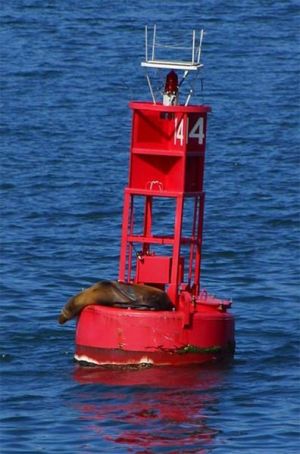England's Historic Seascapes: Southwold to Clacton
Oxford Archaeology (South), 2007. https://doi.org/10.5284/1000277. How to cite using this DOI
Data copyright © Historic England unless otherwise stated
This work is licensed under the ADS Terms of Use and Access.
Primary contact
Oxford Archaeology (South)
Janus House
Osney Mead
Oxford
OX2 0ES
UK
Tel: 01865 263800
Fax: 01865 793496
Resource identifiers
- ADS Collection: 746
- ALSF Project Number: 4729
- DOI:https://doi.org/10.5284/1000277
- How to cite using this DOI
England's Historic Seascapes:
Southwold to Clacton
ALSF Project Number 4729
Oxford Archaeology, 2007
Gunfleet Sands and Wallet
Primary Subcharacter Type:
Caution area

Main Character / current form and use
This area is one of several pairings of sandbank and channel off the North Essex coast which form a series of treacherous navigational features and hazards in one of the major approaches to the Thames. The pairings are considered together due to the dynamic nature of sandbanks. Currently the Gunfleet Sands are leisure fishing and sailing spot well unknown for its shipwrecks. In total the area contains 32 dangerous wrecks and 13 foul ground obstructions. The Wallet is a primary leisure sailing route and recreational fishing takes place within the Wallet and Gunfleet Sands (http://www.leader—lines.com/). The area is also a potential recreational dive site.
The Wallet channel lies parallel with and approximately 2.5 km from the shore and is bordered to the east by Gunfleet sands. This currently a 2 km wide sandbank 7 km off the shore running parallel to the Wallet for a length of 18km. Water depths over the sandbank vary from 0 to 5.5 m and sediments are relatively stable, with sediment movement only occurring near the surface of the seabed (GE Wind energy 2002). Tidal range exceeds 4 m at spring tides producing strong currents. It has been postulated that Gunfleet Sands was formed as a headland or banner bank when the Naze headland extended much further eastwards (D�Olier 2002).
Plans are underway for the construction of a 30—turbine wind farm on Gunfleet Sands in 2007. This installation is expected to generate 108MW of power at full capacity. Public opinion is generally favourable towards the development, which will be visible from the shore and will become a navigational aid. It is proposed that the cable connecting the wind farm to the shore will be buried beneath the seabed for approximately 250 m from the shore then directionally drilled beneath the shore between Holland Haven and Clacton Sailing Club. There should therefore be additional buildings onshore. An extension to the developments (Gunfleet Sands II) has also been approved.
This character area falls within the larger Gunfleet military area, used by the Royal Navy for mine laying and mine counter measure exercises. The area is permanently delineated though access is only restricted during active exercises, notification of which is given by radio shortly before minelaying takes place.
Historic Character and archaeological potential
An early medieval reference records the location of goys, a type of fish trap on Gunfleet Sands. The goys trapped fish when the tide went out, indicating the bank dried during this period. 'Ganfletsond' was named in an official document in 1320 and was named for the Gan Fleet, the old name for the Holland Brook which divided Great Holland and Little Holland (Jarvis 1990). The origin of the name 'Wallet' is unknown. The Gunfleet Sands has long been cited as a navigational hazard whilst the Wallet is a well—recognised navigational route for ships and boats approaching both London and the ports of Harwich and Felixstowe and travelling along the coast. Both are marked accordingly on UKHO charts dating to 1855. A lighthouse was constructed on the sands in 1852 and still stands today (see link).
The proximity of the two navigational features and strong currents in the area has often resulted in the loss of vessels and consequently lives, particularly during stormy weather. Nelson is reputed to have said that in terms of navigation the Thames estuary is one of the worst areas around the UK, being as tricky as a tiger (Bowskill 1998, 159). The recorded losses on Gunfleet Sands illustrate the variety of transport that has used the Wallet channel. For example, local records from Stockton on Tees in 1811 record that the 'Satisfaction' and two other vessels, all coal laden, were lost on the sands, though the crew were saved. In comparison, the Walton and Frinton lifeboat rescued three crew from the grounded motor yacht QFD, in 2002 (http://www.waltonfrintonlifeboat.co.uk). Known wrecks also include HMS Oriana sunk in 1948. In recent years Gunfleet sands has also been used for anchoring pirate radio stations.
Archaeological potential in the area is largely concerned with shipwrecks. Plans for the proposed windfarm have avoided known archaeological sites, though work carried out during piling may provide further evidence of the presence of archaeology. The area has potential for palaeo land surfaces, as it would have been dry land until 8000 BP.
Character perceptions
The Gunfleet Sands are notorious for shipwrecks and as such are entrenched in the consciousness of the coastal communities in the Essex coastal strip. The area contains several navigation aids, such as lights, buoys and cardinal marks and is significant for commercial navigation. The reputation of the area is illustrated by a poem, 'L'Envoi', written by Rudyard Kipling (see link)
Bibliography
Bowskill, D. 1998, The East Coasts, A Pilots Guide From the Wash to Ramsgate. Imray, Laurie, Norie & Wilson
D'Olier B (2002) 'A geological background to sediment sources, pathways and sinks' in Southern North Sea sediment transport study. Phase 2. H R Wallingford, CEFAS/UEA, Posford Haskoning and Dr Brian D'Olier.
GE Wind Energy, 2002, Gunfleet Sands Offshore Wind Farm Non Technical Summary. Gunfleet Ltd
Jarvis, S., 1990, East Anglia Shipwrecks. Countryside Books
Millichamp, M., 2007, Gunfleet Lighthouse. Available at: http://www.lighthouseeclips.org.uk/ (12/03/2007)
Leader Lines. Available at: http://www.leader—lines.com/ (07/03/2007)
Lighthouse E—clips. Available at http://www.lighthouseeclips.org.uk/ (12/03/2007)
Walton & Frinton Lifeboat. Available at: http://www.waltonfrintonlifeboat.co.uk/ (07/03/2007)
Wikipedia. Available at: http://en.wikipedia.org (15/03/2007)








